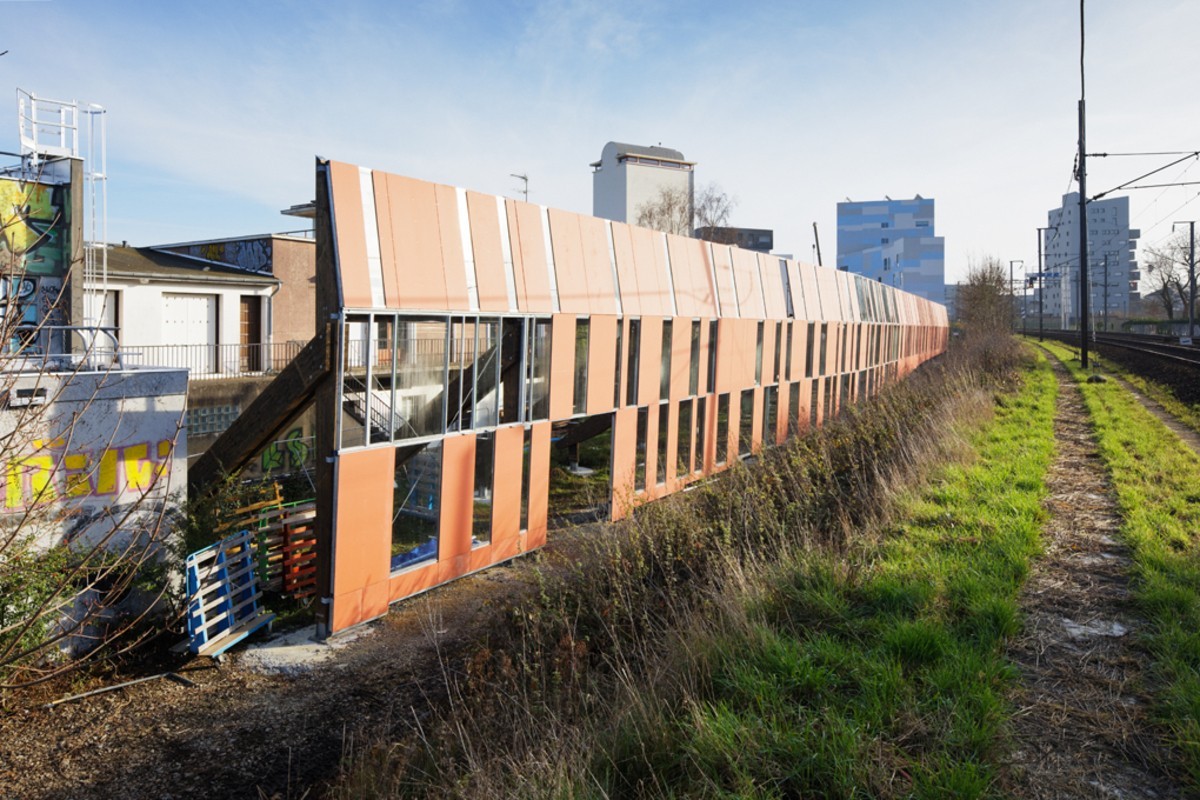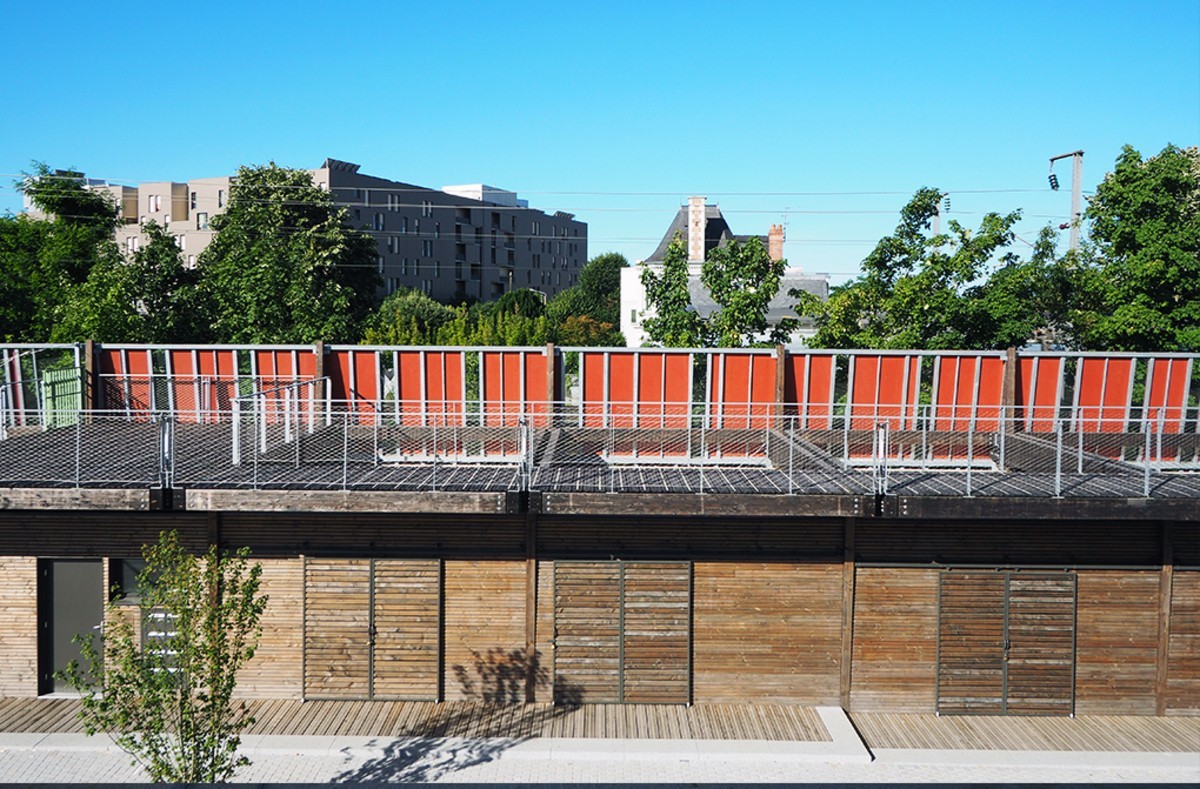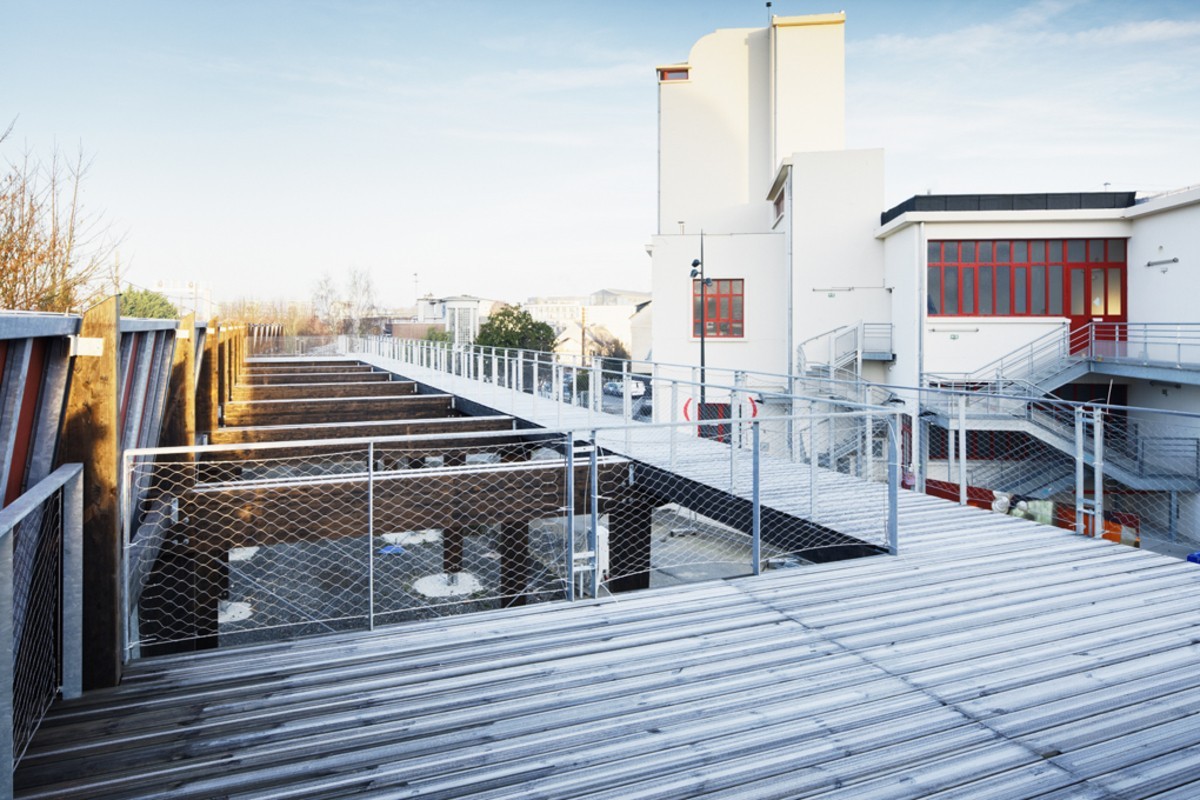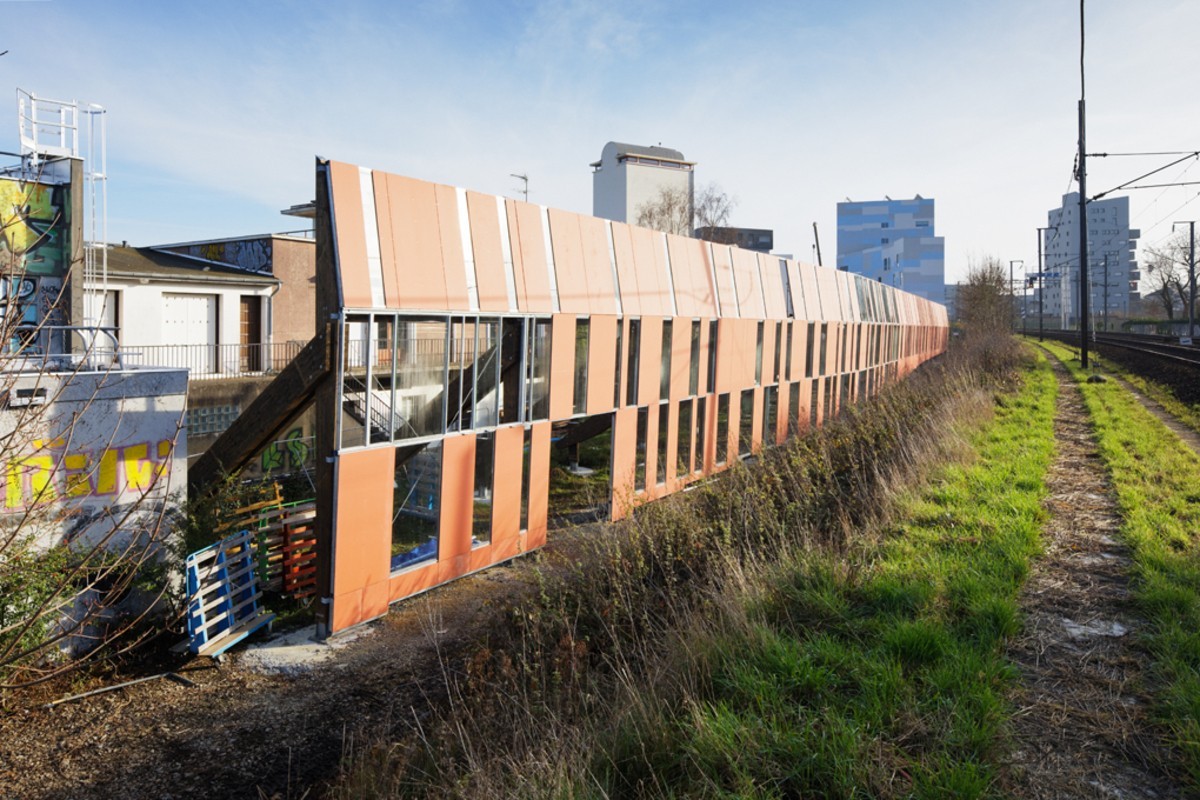Rennes inhabited wall
Last modified by the author on 04/07/2022 - 10:12
New Construction
- Building Type : Other building
- Construction Year : 2018
- Delivery year : 2019
- Address 1 - street : 3 Rue Gisèle Freund, ZAC Claude BERNARD/Alexandre DUVAL 35000 RENNES, France
- Climate zone : [Cfb] Marine Mild Winter, warm summer, no dry season.
- Net Floor Area : 180 m2
- Construction/refurbishment cost : 1 200 000 €
- Number of none : 8 none
- Cost/m2 : 6666.67 €/m2
-
Primary energy need
kWhep/m2.an
(Calculation method : )
Case study proposed and written by Cyril Quinti as part of his Bachelor's degree in Real Estate Management at the Ecole Supérieure des Professions Immobilières (ESPI) in Marseille .
The Inhabited Wall is a sustainable project for several reasons. Let us already mention the choice of building materials: wood in very large part. We find a modular wooden structure , forming the acoustic wall that runs along the SNCF track. On the street side, we find a multitude of dynamic surfaces intended for workshops and premises for young designers. The entire structure also includes other materials (glass panels or cement on the railway side) but also a lot of open spaces on the greenery .
Also, this work is traversed by a network of footbridges and balconies which ensure connections between the district and the banks of the Vilaine. It constitutes "the background" of the Ateliers du Vent, a cultural collective invigorating and popularizing the new culture of this former industrial district abandoned by factories and replaced by centers of cultural activity.
This project is a good example of sustainable construction because its primary purpose was to protect a neighborhood from noise, but the creators went further by giving meaning and identity to the work. Thus, new challenges and urban and civic functions emerge, giving a significant attractiveness to the new district.
Building users opinion
Of the 8 craftsmen occupying the premises, all are really delighted to be present in the wall. It should also be noted that these craftsmen benefit, in addition to the 180 m² of surface area dedicated to their business premises, from 790 m² of VRD (Roads and utilities), representing the various pedestrian paths at the bottom of the structure but also on its roof.
Add to that, the 700 m² of acoustic screen present on the Wall and you get a place conducive to walks and the discovery of the various craft activities present.
If you had to do it again?
A new project inspired by the Inhabited Wall will soon see the light of day a few steps from rue Gisèle Freund. Indeed, a construction project concerning the construction of housing but also a new inhabited wall is planned by 2025. This project is based on the principles of the Positive Energy and Carbon Reduction label reference system.
See more details about this project
https://lebunetel-architectes.com/?q=en/node/146Photo credit
Lebunetel Architects
Contractor
Construction Manager
Stakeholders
Designer
LE PRIOL Architecte associé
02 23 20 02 98
https://www.atelierlepriolarchitectes.comCompany
UNIVERS Paysagistes
02 99 63 64 66
https://agenceunivers.frExterior landscaping
Company
ECL Studio Concepteur Lumière
06 51 01 94 97
http://www.ecl-studio.com/Structures calculist
Acoustibel
09 62 12 33 92
https://acoustibel.site-solocal.com/Structures calculist
Alteabois
04 67 59 57 69
https://www.alteabois.com/contact/Contracting method
Public Private Partnership
More information
The inhabited wall being initially a work intended to reduce the noise caused by the railway, the premises located on the ground floor are therefore not subject to a DPE. It is for this reason that we cannot provide energy consumption for this building.
Systems
- Electric radiator
- Individual electric boiler
- No cooling system
- Double flow
- No renewable energy systems
Urban environment
Construction and exploitation costs
- 1 200 000 €













